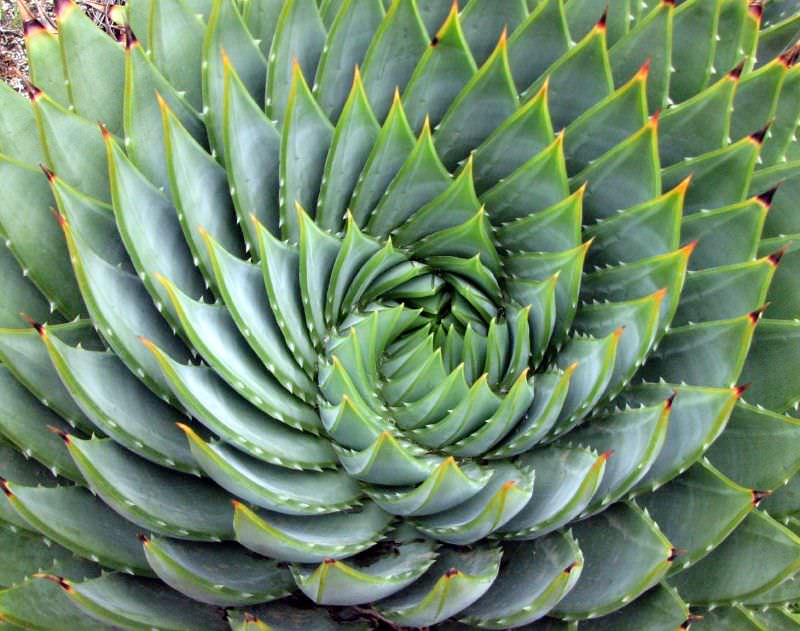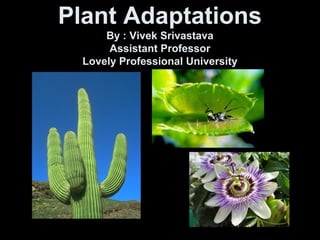Plants Adapted to Arid Environments Are Referred to as
Additionally plants that live in dry areas often evolve thick outer cuticles that can help retard. Which of the following describes a means through which some plants are adapted to arid environments.

Multilevel Strategies Of Plant Adaptations To The Light Environment Download Scientific Diagram
This allows them to survive in arid environments.

. Any plant possessing vascular tissue xylem and phloem including ferns conifers and flowering plants. Equal amounts of sand silt and clay. Plants adapt to dry conditions in a variety of ways but many respond to dry conditions by storing large quantities of water which can be used in times of need.
These adaptation enable desert plants not only survive but to thrive in hot and dry desert conditions. Plants that live in extremely dry environments have the opposite problem. The vast majority of terrestrial plants today are seed plants which tend to be better adapted to the arid land environment.
Aloes are succulent plants which have adaptations that allow them to store water in their enlarged fleshy leaves stems or roots. Other desert plants using behavioral adaptations have developed a lifestyle in conformance with the seasons of greatest moisture andor coolest temperatures. Seedless plants are classified into three main catagories.
Plants such as the lotus grow in water have modified stems with pores and have short roots. Plants growing in dry arid regions have long tap roots that allow them to search deep underground for moisture. How do plants adapt to Variable leaf temperatures.
These plants use a variety of methods to conserve water reduce transpiration and get the most out of the scant and often seasonal precipitation. Extensive root systems coupled with various morphological and physiological adaptations of their aerial parts enable. D the light.
Drought-enduring plants evergreen shrubs. Many plants in. While some plants remain dependent on a moist and humid environment many have adapted to a more arid climate by developing tolerance or resistance to drought conditions.
The enzyme that catalyzes the conversion of atmospheric nitrogen to ammonia is _____. Phreatophytes are plants that have adapted to arid environments by growing extremely long roots allowing them to acquire moisture at or near the water table. Alternation of generations describes a life cycle in which an organism has both haploid 1n and diploid 2n multicellular stages although in different species the haploid or diploid stage can.
Halophytes- Plants adapted morphologically or physiologically to grow in salt rich environments. Xerophytes have adapted to be able to hold onto large amounts of water for a long period of time or limit water loss. Up to 24 cash back The greater roadrunner Geococcyx californianus is a bird species found in the Great Basin Sonoran Mojave and Chihuahuan deserts 10.
C the light compensation point. P lants have adaptations to help them survive live and grow in different areas. Plants that are adapted to very dry environments are called xerophytes.
-plants adapted to warmer dryer environments-spacially separate CO2 fixation and assimilation of CO2 into the Calvin cycle--Initially fixed in mesophyll cell. The plant adaptations in arid environments include having a very thick stem to store water. Their adaptations may help them increase water intake decrease water loss or store water when it is available.
Aquatic plants that live underwater have leaves with large air. Plant Adaptations study guide by serena_stoeck includes 42 questions covering vocabulary terms and more. Without these capabilities the plants would die as their arid environment does not provide enough water to sustain life.
For example cactuses store water in their trunks and stems while aloe plants store water in their leaves. Drought-evading plants non-succulent perennials which restrict their growth activity to periods when moisture is available. Adaptations to Extreme Dryness.
Many plants adapted to arid environments utilize the _____ photosynthetic pathway to fix CO2 during the night. This allows them to survive in arid environments. It is essential for plants and animals living in these areas to form unique behavioral physiological and morphological adaptations tailored to these environments to ensure their survival.
Fleshy-leaved succulents small desert wildflowers and shrubs and trees with waxy leathery fuzzy or very small leaves all thrive in hot dry environments. The value of photosynthetically active radiation above which no further increase in photosynthesis occurs is referred to as A photoinhibition. Plant adaptations are changes that help a plant species survive in its environment.
Plants that grow in tropical rainforests have broad leaves to allow more transpiration to take place as the. This explains why certain plants are found in one area but not in. In very cold regions the leaves of plants are needle-shaped.
The morphological physiological and behavioral adaptations that desert plants have formed over time enable them to survive the harsh conditions common in arid environments 10. Quizlet flashcards activities and games help you improve your grades. Desert plants grow in one of the harshest environments on Earth and therefore benefit from special adaptations that help them to survive.
Desert vegetation often appears different than plants that grow in other types of environment or biomes. These adaptations might make it very difficult for the plant to survive in a different place. This thick stem is also covered in a waxy skin to reduce the loss of the stored water.
Topsoils referred to as loams are composed of _____. Up to 24 cash back Most desert plant species are called xerophytes because they have in some way changed their physical structure to tolerate extremely hot and dry conditions 10. Green algae seedless non- vascular plants and seedless vascular plants.
It has several physiological adaptations well suited for arid desert environments like a specialized nasal gland that allows it to remove excess salt from the water it consumes 10. Up to 24 cash back Arid desert ecosystems throughout the western United States pose a unique set of challenges for the living organisms that inhabit these areas. How to get and keep water.
Leaf temperatures can effect the the photosynthetic rates of. This is a very. Typically they are drought-deciduous shrubs which go dormant or die back during dry periods.
Pathway very common in Desert and arid environments. Xerophytes are plant species that have evolved to survive in dry regions. Adaptations are special features that allow a plant or animal to live in a particular place or habitat.

Plant Adaptations Read Biology Ck 12 Foundation

How Are Desert Plants Adapted To Survive In A Desert Desert Plants Plants Succulent Gardening


No comments for "Plants Adapted to Arid Environments Are Referred to as"
Post a Comment